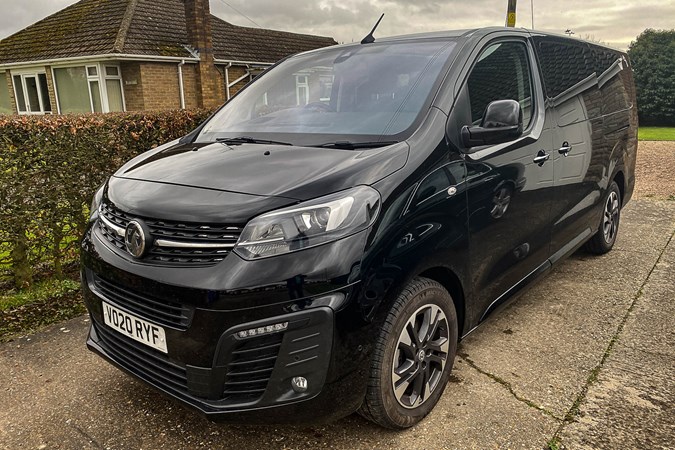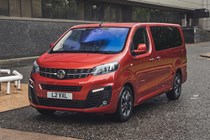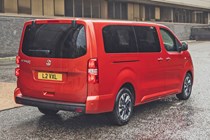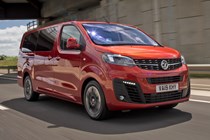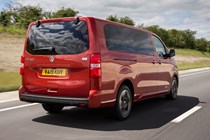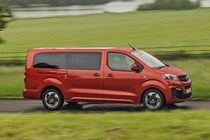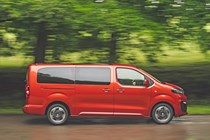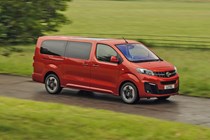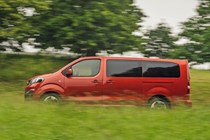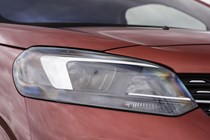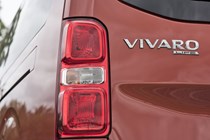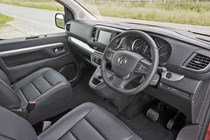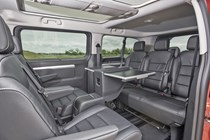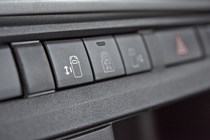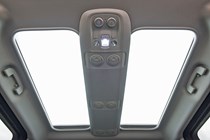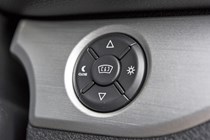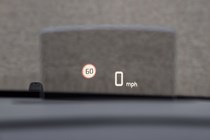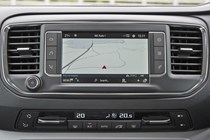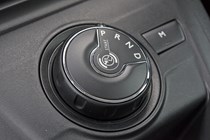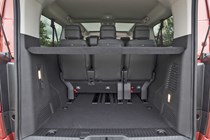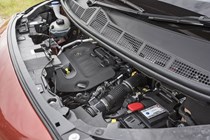
Vauxhall Vivaro Life MPV (2019-2022) long-term test
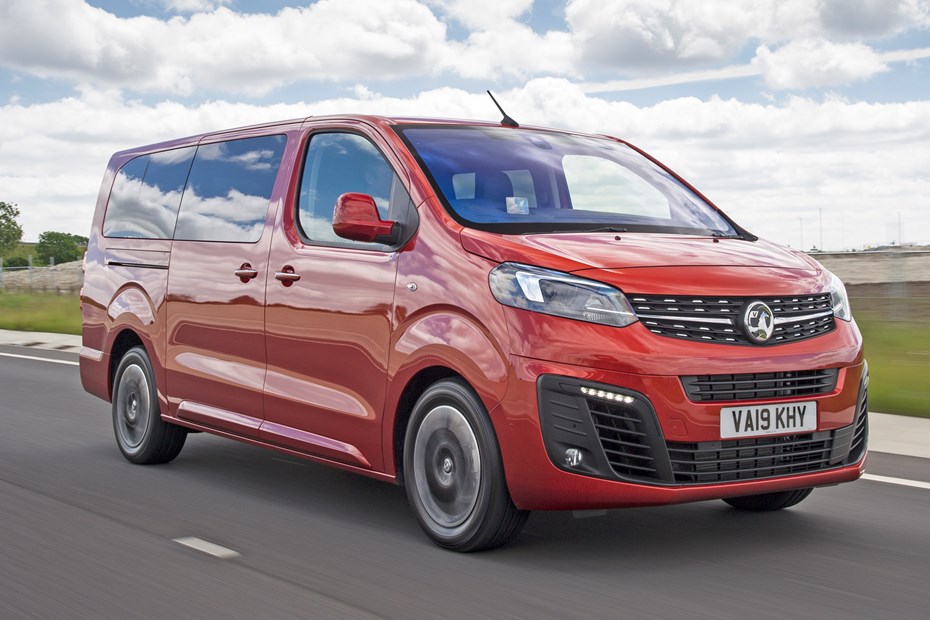
Update 1: welcome to Parkers
Newest van-based MPV joins the long-term fleet
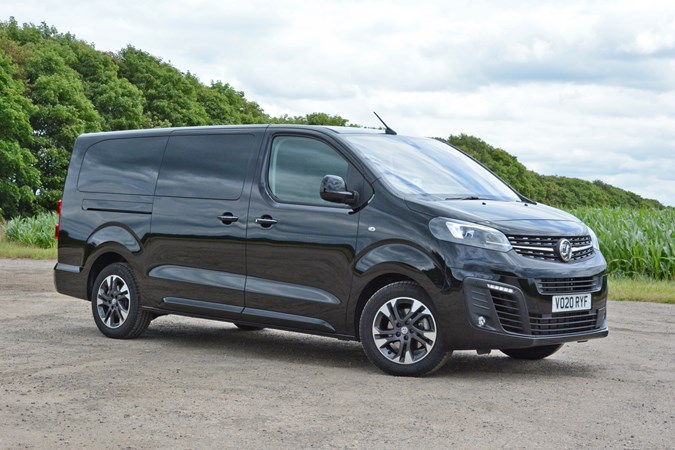
Regular followers of my musings – all three of them, in fact – will be more than aware of my fondness for commercial vehicle-based people carriers, so the prospect of running another one as a long-termer was something of a highlight in a year that’s been sorely lacking in lustre.
This time around my steed is this Vauxhall Vivaro Life, the newest car of its kind, depending upon how economical you choose to be with the truth.
As you will be aware of from the main review, while the Vivaro Life only went on sale in 2019, it’s little more than a British-built version of the Citroen SpaceTourer, Peugeot Traveller and Toyota Proace Verso trio that have occupied a sizeable amount of showroom space since 2016.
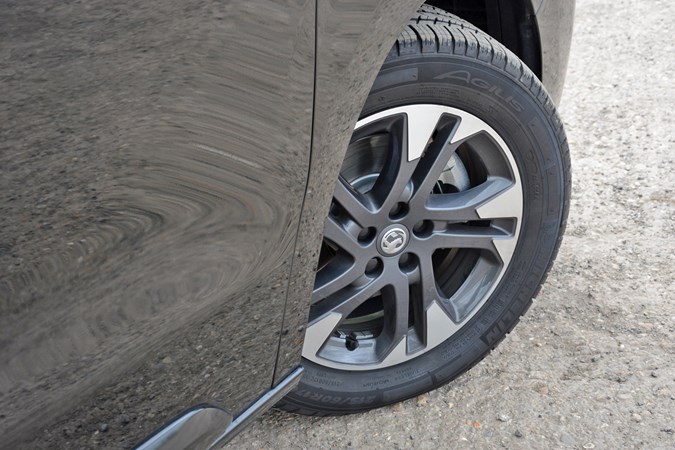
Save for its Vauxhallised nose styling, and griffin badges inside and out, it’s essentially the same, although I’m hoping it proves to be significantly more reliable – its French-assembled forebears have had an unfortunately poor reliability reputation and a such a high number of recalls that even Donald Trump is campaigning to stop the count.
Which version is our Vivaro Life?
As per our recommendation in the main review, I’ve gone for the higher of the two trim levels, with the punchiest diesel engine and the longer body. In Vauxhallspeak that makes this the Vivaro Life Elite L 2.0 (180PS) Turbo D automatic – or £44,700 in monetary terms.
Key benefits of this specification grade over the blue collar Edition version are a plusher interior thanks to leather seats (which do feel rather plasticky, it has to be said), three-zone climate control making it easier to modulate the vast cabin’s temperature, a glazed roof to illuminate the otherwise sombre interior and electric side doors to make entry and exit even more of a doddle.
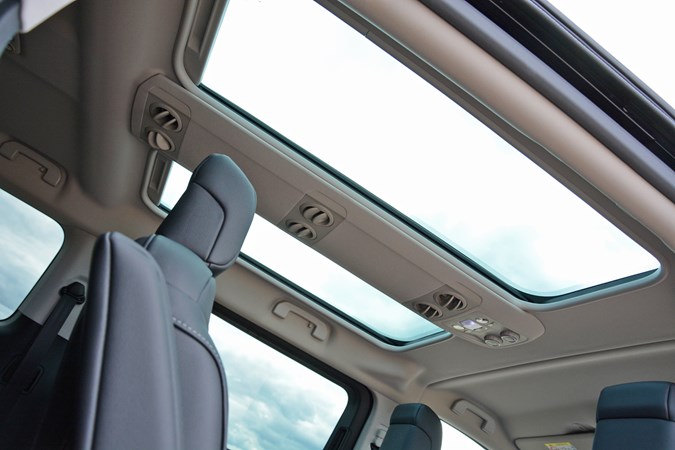
Options-wise, I’ve been modest. Internally the middle-row three-seater bench has been replaced by a pair of captain’s chairs (£800) and a foldable table (£495) that moves to and fro using the same rails as the seats.
Outside, the only change was to go for metallic paint (£545), although in retrospect one of the lighter or brighter choices than Diamond Black would have been preferable.
Combined with the Elite’s very dark rear privacy glass, the combination looks – depending on your perspective – either like the kind of VIP transport used in The Apprentice or a private ambulance. Few vehicles cause more panic when parking up outside an old people’s home.
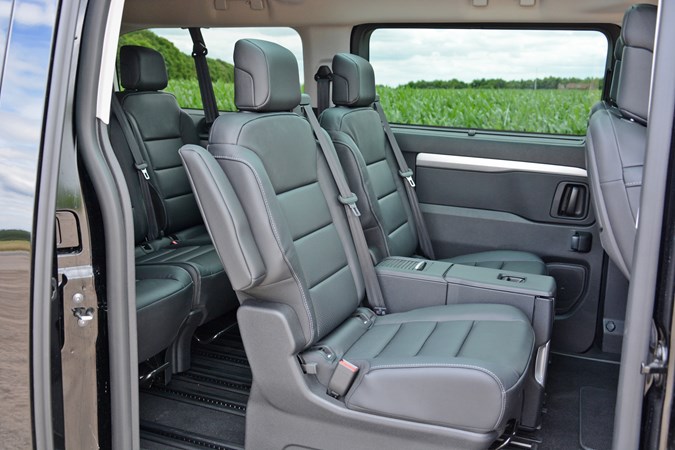
Overall, the asking price adds up to £46,540, which many people keep telling me is either a lot of money for a Vauxhall or a lot of money for a van. Or a combination of the two. Either way, in the coming months I’ll be assessing whether or not it’s good value.
Early positive impressions?
Most immediate of things you notice within a short time behind the wheel is how easy the Vivaro Life is to drive. Sure, it’s a long beast, but in terms of width it doesn’t feel any broader than a conventional large family car. Nothing scary for urban driving, then. At least until you have to find a parking space.
If you’re a regular driver of medium and large vans you’ll be aware that more often than not you still look down rather than ahead at the dashboard, but not so much in the Vauxhall. You sit high, so have excellent all-round visibility, but the positioning of the instruments and controls feels more like that in a conventional car. The head-up display merely augments this arrangement.
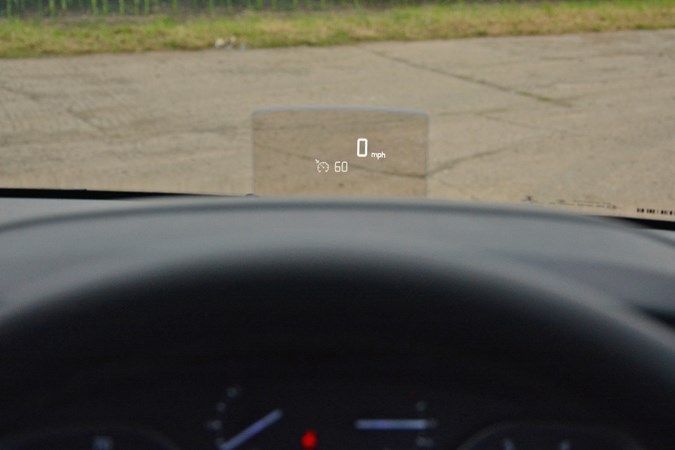
Doubtless, both of these points relate to the fact that underneath everything you can see are underpinnings known internally as EMP2. This basic hardware – albeit in different lengths and widths – is found under all manner of other PSA products including the Citroen C5 Aircross, DS 7 Crossback and Peugeot 508.
It’s a similar story with the 2.0-litre, 180hp diesel engine and its eight-speed automatic gearbox, which can also be found in those and other models. It’s a useful ally for the Vivaro Life where it needs to persuade people to consider switching from a ‘normal’ MPV as it delivers sensible pace, even when loaded with passengers or cargo.
Hopefully the fuel efficiency will climb a little from the 30mpg it’s been hovering at over the first 1,000 miles once the engine’s been run-in some more.
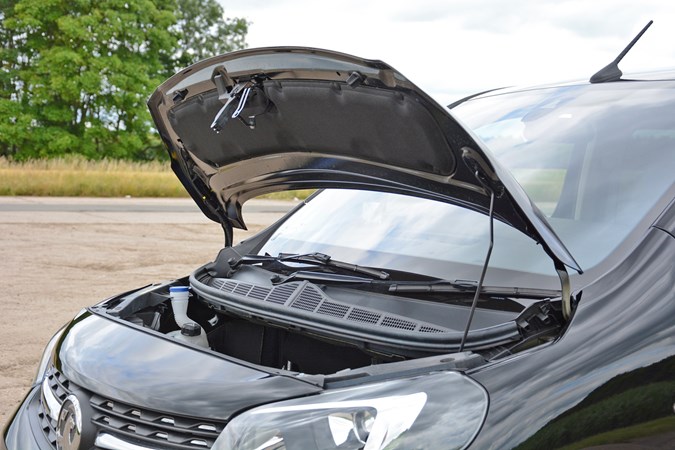
As an aside, when you have a look at the engine you’ll quickly appreciate how low down it sits compared with the bodywork, as well as noticing how comically short the bonnet itself is.
Any initial niggles?
There are, but they’re design flaws rather than things breaking off or failing to work properly, chief of which is the steering wheel that’s offset to the left of the otherwise fine driving position.
After a few short drives you tend not to notice it, unless you have the opportunity to drive something else occasionally – then you’re very aware of it when you climb back in the Vauxhall. It also makes its presence felt on longer journeys where you’re conscious after a couple of hours behind the wheel that your right arm feels more strained than your left one as a consequence of having to reach further across.
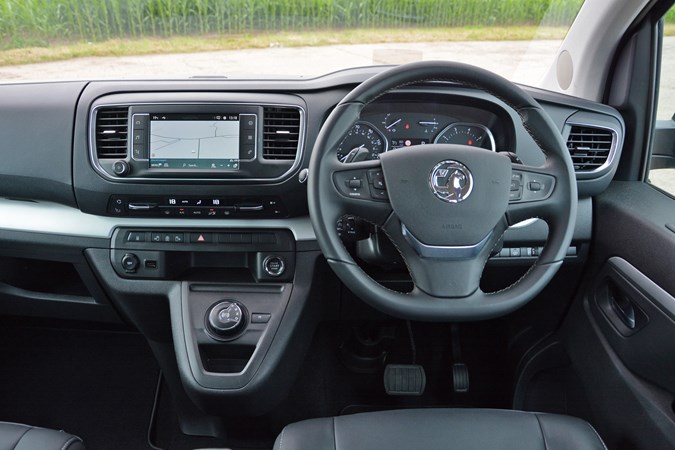
At this early stage the middle-row captain’s chairs are pointing forwards for space efficiency, but the plan is to install them backwards for most of the time the Vivaro Life is with me – I much prefer the more sociable feeling it creates, and by having the middle row seats against those up front, visibility through the car to the back is improved too. I’m concerned that the rear seats won’t slide far enough back to make this feel truly comfortable, though. Await a future update on that.
Where cars have Apple CarPlay functionality, I tend to use it rather than the manufacturer’s own operating system and navigation. In the Vivaro it displays via a 7.0-inch colour touchscreen which is sufficient, but lacks the sharpness of graphics and richness of colour you’ll find in a Mercedes V-Class or VW Caravelle.
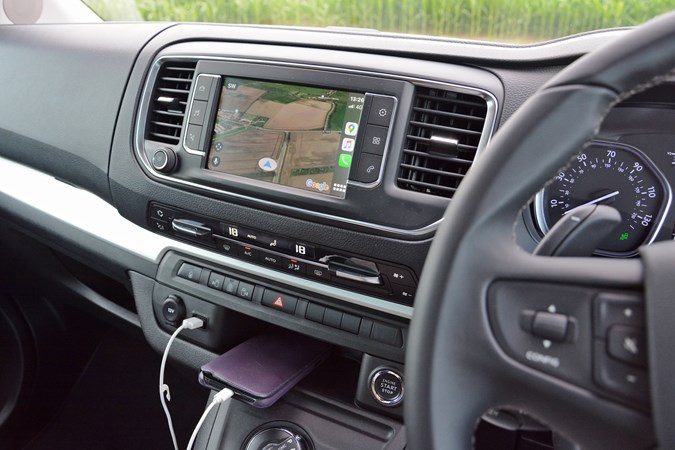
While the display itself is a minor grievance, more frustrating is that the cubby next to the USB port on the dash – there’s no wireless charging plate – is too small for many contemporary smartphones, meaning I either tend to leave it resting on the passenger seat or feed the cable over the steering column where it’s just about long enough to rest the phone in the highest of the three door pockets.
What questions will we answer in this long-term review?
Primarily, I’ll be finding out whether the Vivaro Life has a genuine place in the market, between the upmarket V-Class and Caravelle at the pricey end, and the smaller, more conventional Ford Galaxy and Volkswagen Sharan at the other.
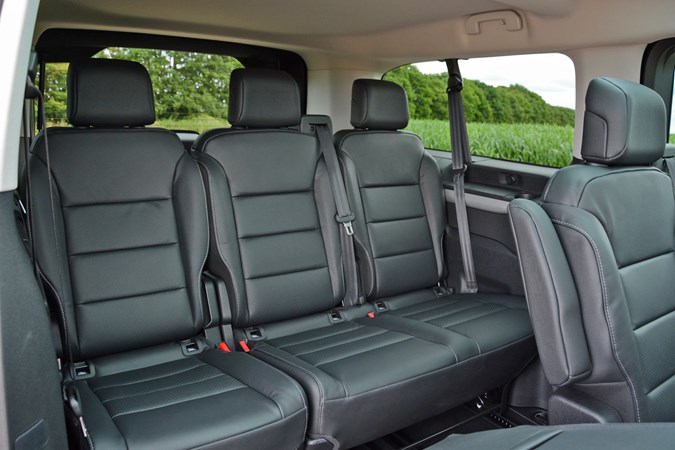
I’m also keen to find out whether some of the cost-cutting elements, such as the third row of seats not being able to slide further back, have robbed the Vauxhall any chance of being a truly flexible people carrier because chair positioning is restricted.
Van-based cars like the Vivaro Life are all-too-easily dismissed, especially by families who could really benefit from one but are put off by its size and commercial vehicle origins – it will be interesting to see if the Vauxhall’s good enough to change people’s opinions.
Mileage: 1,238
Fuel economy: 30.0mpg
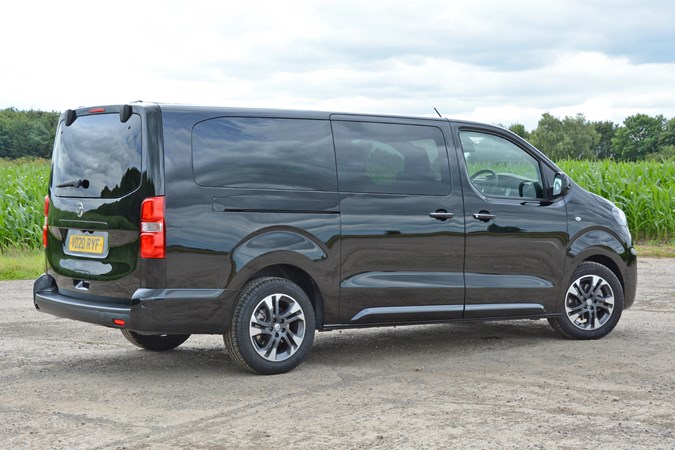
Update 2: driving experience
Can Vauxhall’s largest model be fun to drive despite being van-based?
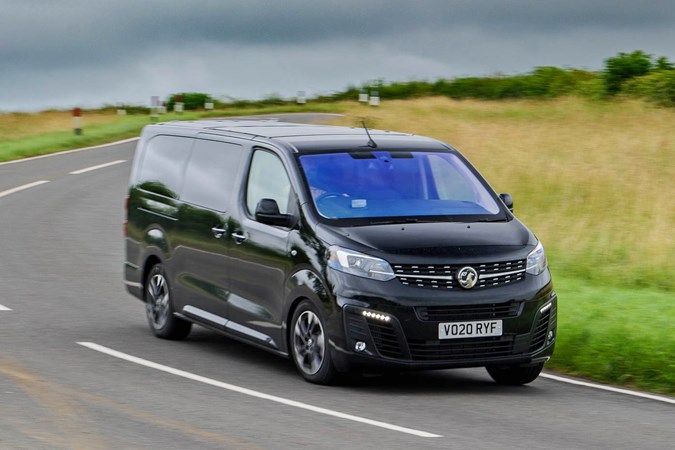
I find it difficult not to develop soft spots for cars that surprise and delight. Motors that within their arsenal of talents is the additional appeal of it performing brilliantly at something you weren’t expecting. It gives me a bit of a buzz.
Given the variety of generally fine-handling cars that are based on architecture that the Vivaro Life shares the fundamentals of – Peugeot 508 especially – I had high hopes of correctly guessing what the Vauxhall’s key surprise would be even before I’d turned a wheel.
Reader, I was wrong. Consequently, there’s no need for Cilla Black theme tune vocals to play in the background while I describe the driving experience.
Gently does it
On most roads, at most speeds, the Vivaro Life is proving to be a competent, benignly safe family bus. Corner with consideration, ease on and off the pedals with care as you slow down and accelerate, and all is fine. No drama, but no excitement either.
That’s fair enough, you say – its purpose is to ferry folk about safely, not be a point-to-point superstar as you clip every apex on all manner of winding, undulating B-roads.
While I’m cool with that, it doesn’t stop me yearning something that makes it feel special – either exceptional comfort or impeccable balance when you’re in it alone and want to hustle the Vauxhall along. It’s all just a bit too ordinary.
Comfort is compromised
Let’s take comfort first. Bitter, sour and pungent personal experience tells me that a car with a cosseting, floaty ride quality might make me happy, but it induces motion sickness in any one – or all – of my three kids. Their innards are much calmer when the imperfections of the road surface are telegraphed to their bodies using the seats, floor and other touchpoints as conduits.
Here the Vauxhall scores decently because it does this while still rounding-off the sharpest edges of the ruts and bumps without ironing them out flat enough to bring on a series of Technicolor yawns.
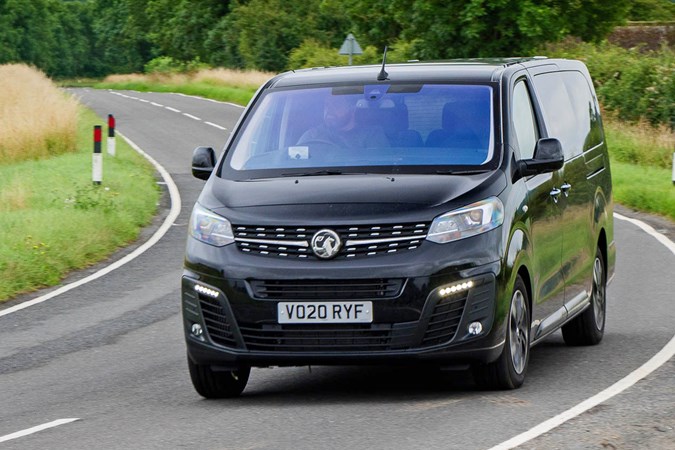
Personally, I’d have liked to be able to specify adaptive suspension to soften-off the firmness further when they’re not being taxied about, but it’s not on the options list. Presumably the projected sales levels of such an extra was too small to justify the engineering expense.
What’s also obvious when they’re not present is how less accomplished it feels without some weight towards the back of the car.
With just the driver on board, not only does the rear suspension have more of a tendency to crash over poor surfaces, you can often hear it working as the noise is amplified by all the empty space behind you. This in turn causes the seats to vibrate in their rails and various pieces of plastic trim to rattle.
Handling has room for improvement
Particularly unsettling for the Vivaro Life are the kind of roads it unfortunately spends plenty of time being driven on in rural Lincolnshire – several series of swift, sweeping bends, with varying cambers and often with pockmarked asphalt.
Point the Vauxhall along stretches like that while you’re driving it passenger-less and you become acutely aware of how unsettled the rear end is, causing the whole body to shimmy as skips around poorly surfaced corners.
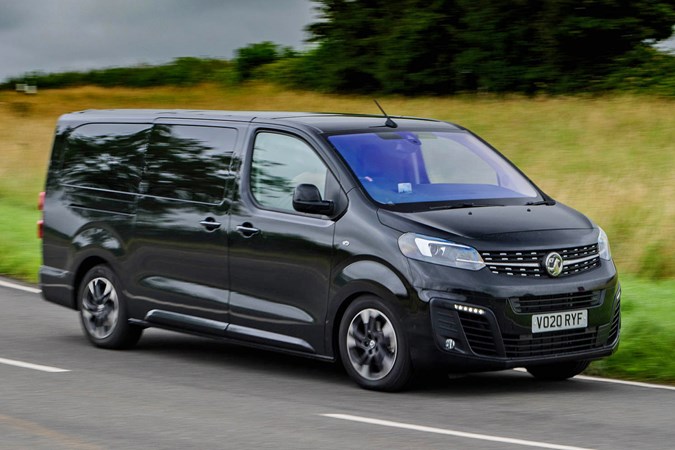
Slowing down considerably controls it, but then you immediately open yourself up to being overtaken on the next sizeable straight.
Adding passengers on the third row also remedies the worst of it, that extra weight over the rear axle helping stabilise those additional body movements when cornering.
A solution – of sorts
Like many things in life, I discovered a cure for this recalcitrant behaviour completely by chance when a few weeks ago I obtained (another) load of old car brochures for my archive.
Five rear seats folded over, I loaded the Vivaro Life with 42 bankers’ boxes full of glossy literature. At a conservative estimate there was approaching a tonne of paperwork – and me – on board, all well within Vauxhall’s stated maximum gross vehicle weight of 3100kg. Even a visual check from the side confirmed that it looked horizontal.

That 200-mile drive back made the Vauxhall feel like a different vehicle. No bouncing about around corners, no rattles from the interior as the bodywork tried to flex – just assured, comfy progress, spoiled only by the need to accelerate harder than usual away from junctions and roundabouts. Oh, and brake that bit earlier as I approached those same junctions and roundabouts…
So, the surprise and delight aspect I’ve confirmed so far is that while the Vivaro Life’s decent at hauling people around, it’s even better at shifting a lorra lorra cargo. Who’d have thought it, being van-based and all.
Of course, being in the car alone also helps with social distancing, so I’ll take that as a win as well.
Mileage: 2,644
Fuel economy: 30.8mpg
Update 3: taking on the Caravelle
Volkswagen seems to produce the default van-based MPV, but is its high price justified?
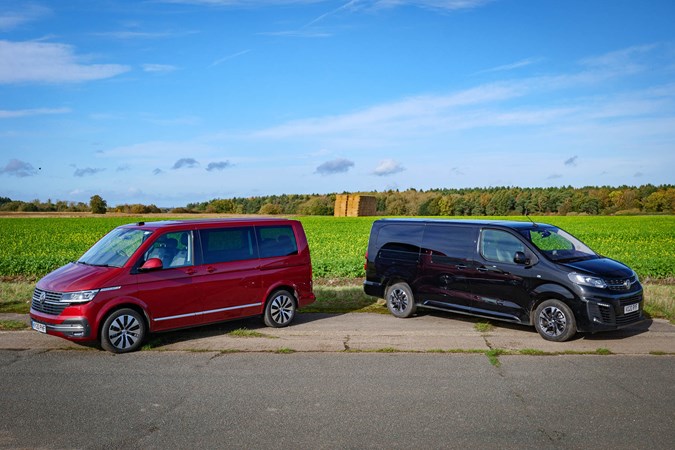
One aspect of writing about cars for a living that I find especially fascinating is the twin test; two seemingly similar vehicles are pitted against one another only for the deep dive experience to reveal how different they actually are.
So it was with Parkers’ long-term Vivaro Life when it went toe-to-toe with Volkswagen’s perennial favourite, the Caravelle. On paper, both are high-spec seven-seaters, with similarly powerful 2.0-litre diesel engines driving the front wheels via an automatic gearbox, electrically operated sliding side doors and oodles of space for people and their belongings.
Yet, despite that apparent closeness in concept the VW is £13,371 more expensive to buy – or £16,631 dearer once the fitted optional extras fitted to these two have been taken into account.
Does the Caravelle feel more expensive?
Prod, poke and push anywhere within both the Vauxhall and the Volkswagen and you’re quickly aware of two things: the pair of them are well-assembled, but the quality of fixtures and fittings feels far superior in the VW.
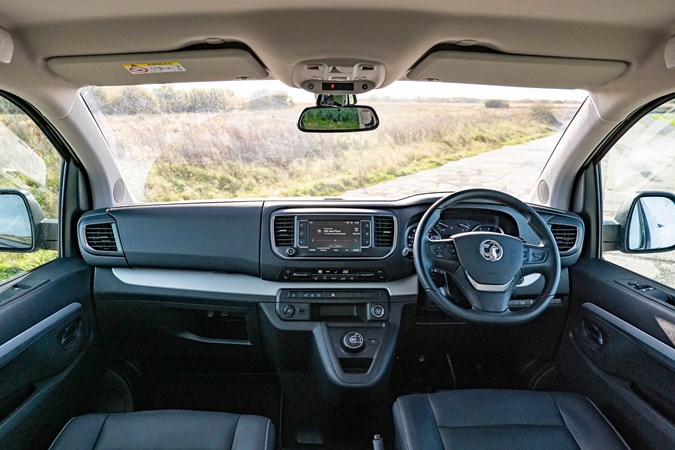
Everything about the Caravelle has a reassuring air of solidity about it when compared with the equivalent feature in the Vivaro Life. It’s quieter, the rear seats don’t rattle around to the same degree, the electric doors are smoother in operation, dashboard buttons have better damping, the multimedia screen looks sharper and your primary touch points as a driver – the wheel and gear lever – both feel more upmarket.
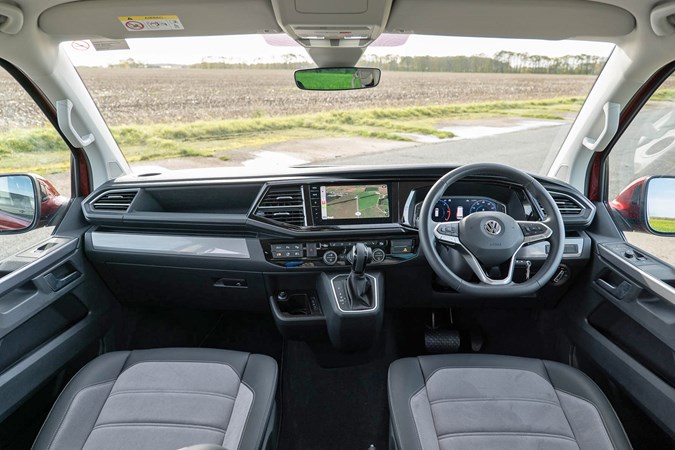
Outside, the Volkswagen looks glitzier even without the two-tone optional paint job. Chrome accents on this Executive version out-do the shinier details on the Vauxhall, while the VW’s LED lights front and rear make the efforts on our long-termer look a tad after-market.
Nevertheless, the Caravelle can’t hide its van-based origins against other VW cars. Sit inside a humbler Golf at less than half the price and you’ll be treated to squidgier soft-touch plastics for various mouldings and a veritable rainbow of ambient lighting colours to softly illuminate the cabin. The Vauxhall doesn’t have those either, of course, but it feels a bit more honest about it.
Lots of car for less money with the Vivaro Life
Even if the pair were priced identically, you’d feel you were getting more bang for your buck with the Vauxhall given how much longer it is than the VW. You can buy longer versions of the Caravelle, but not with the range-topping Executive trim level in the UK.
In real terms this allows the Vauxhall’s rear five seats to be in the sociable configuration of having the second row facing the third, while there still being ample space in the boot for seven adults’ luggage. You’d have to be traveling exceedingly light in the VW – think little more than toothbrush and undies – to pull off a similar feat.
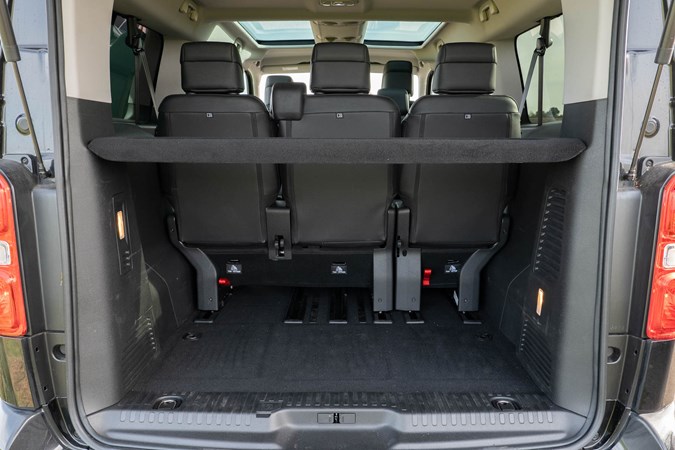
While the Vivaro loses a mark for not having a convenient electrical tailgate, it claws one back against the Caravelle thanks to its opening rear window hatch, which isn’t even an option in the Volkswagen. It’s proved uncannily useful when I’ve reversed into parking bays with little room behind the car.
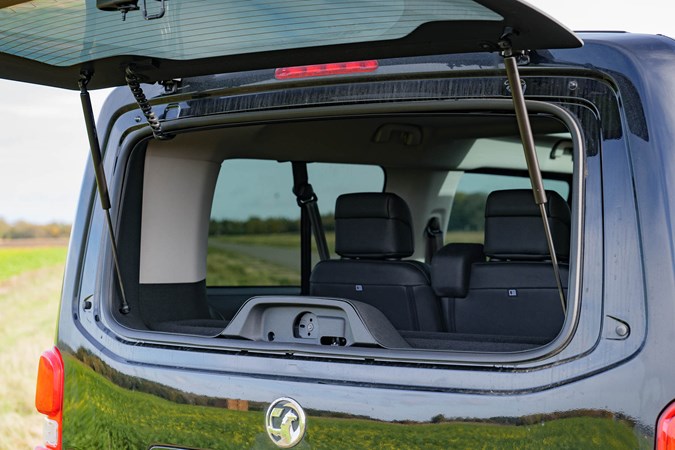
So, the Volkswagen’s been trounced there, right? Not exactly. Even though the Caravelle’s interior has significantly less length, it’s much more flexible in terms of how the space can be used.
Key to this is that its seatbelts are all mounted on the seats themselves, allowing for much greater scope as to their position. Additionally, the middle row seats are much easier to return to their forwards position, simply rotating on top of their bases, rather than requiring unclipping and reinstalling.
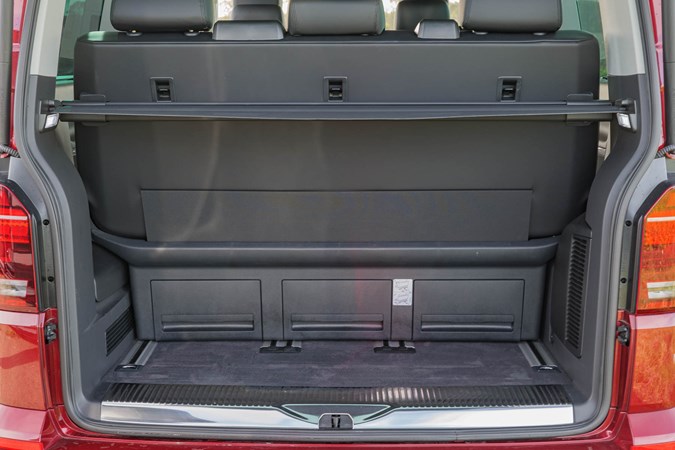
It won’t be as sociable back there, but with a bit of rejigging, the Caravelle can accommodate as any people and suitcases as the Vivaro Life.
Elsewhere in the VW you’ll find more storage space, with lidded cubbies under all five rear seats, shelves on the dashboard and a pop-up table in the rear that feels sturdier and rattles significantly less while driving.
Consummate Caravelle the comfier
As mentioned in the previous update, as well as the main review, the Vivaro’s comfort is compromised by its behaviour on poorly surfaced roads, making the rear end especially prone to bouncing about, particularly when cornering.
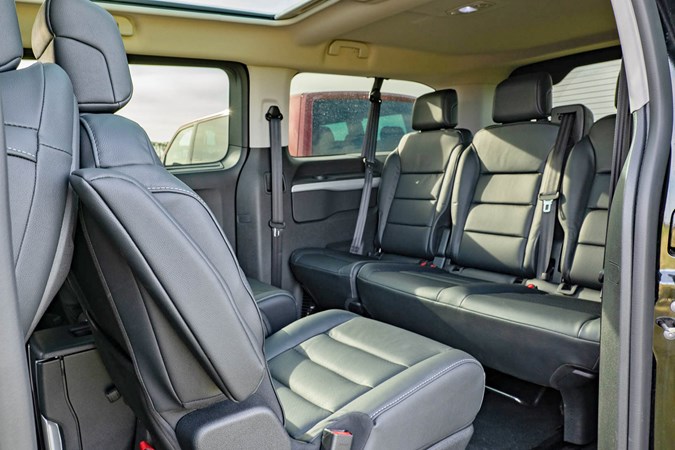
By contrast the Caravelle is much more composed, particularly on models like this test car fitted with adaptive suspension. Even in the softest of its 15 – yes, fifteen – firmness settings, the VW rarely feels floaty, with enough of the asphalt’s undulations being felt so that you maintain a sense of connection with the road. This is welcome if your passengers are prone to feeling travel sick.
Yet, despite that, it’s composed, with none of the ruts or bumps feeling jarring within the car. Only at very slow speeds, such as dealing with speed bumps in supermarkets, does it feel too unyielding.
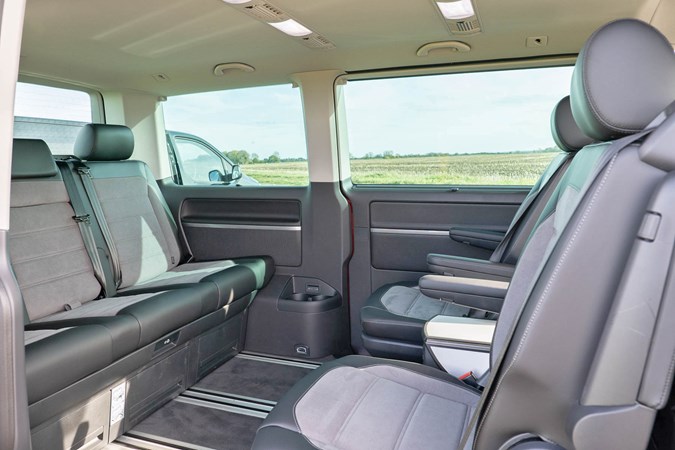
Further cementing the Caravelle’s comfort credentials are its superior climate control system for rear passengers, which is much more effective than the Vivaro’s for both cooling and heating the cabin, and its window blinds. These are fitted on all four rear side windows and closely match the shape of the glass – on the Vauxhall they are only fitted to the windows in the doors, shading out a smaller proportion of the glazed panel in the process.
Still, only the Vauxhall has the benefit of a glazed roof, even if it is only a panel above the middle row – it certainly makes what would be an otherwise gloomy interior feel airier.

Volkswagen instead has chosen to maximise the interior lighting on the Caravelle with (very) bright LEDs mounted in the ceiling. It certainly makes wrestling with seatbelts, plugging in USB cables and seeing exactly where things have been dropped much easier.
Which is the better MPV?
If the prices of these two were the same, it would be a clear win for the Volkswagen Caravelle. It feels more prestigious and substantial, plus it will hold a greater proportion of its value when you come to resell it.
But they’re not the same price and £13,000 is a chunky sum in most people’s books, making the Vauxhall look to be very good value, especially when you factor in how much bigger it is than a traditional car-based MPV such as the Vauxhall Zafira Tourer or Volkswagen Sharan.
In truth, despite their similarities on paper, they’re very much aimed at different clientele – if you’re considering one, it’s improbable you’ll be looking at the other. Keep that in mind and both cars fulfil their briefs well.
A win-win, then? To a degree, yes, but there remains room for Vauxhall to make the Vivaro Life feel more special – and more comfortable – without adding significantly to its cost. Crack that and perhaps the Volkswagen could start looking overpriced.
Mileage: 4,068
Fuel economy: 31.2mpg
Update 4: time to go electric?
Vauxhall has launched an EV version of the Vivaro Life – is diesel dead?
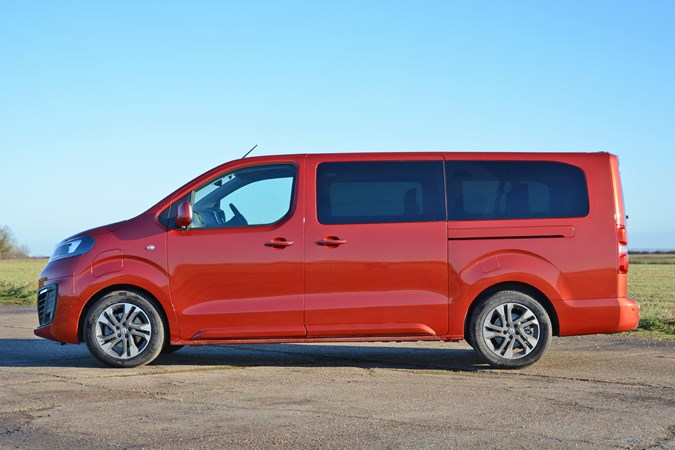
While fully electric cars – battery electric vehicles, or BEVs for short – don’t suit all car buyers, they are appropriate for a wider range of drivers than would currently consider one.
Over the past few years, I’ve been in the fortunate position to drive all manner of BEVs from the dinky Renault Twizy to long-distance cruisers such as Tesla’s Model X with its show-stopping falcon wing doors. So far, I’ve yet to find one that I couldn’t easily slot into my life and use as my sole car.
Given my fondness for van-based people-and-stuff carriers, the appearance of the electric Vivaro-e Life in Vauxhall’s price list last year caught my eye, and recently I managed to drive one back-to-back against the diesel you’re familiar with on this page.
Improved refinement is welcome
In isolation, our Vivaro Life’s 180hp diesel engine is relatively refined most of the time, but even spending just a short time driving the electric version reveals a considerable difference.
At low speeds, the Vivaro-e is virtually silent, ramping up to a pleasant background whirr as speeds escalate. While in the diesel version that also creates vibrations through the bodywork and interior fittings, causing them to rattle, there’s significantly less of it here, further improving the calm aura of the cabin.
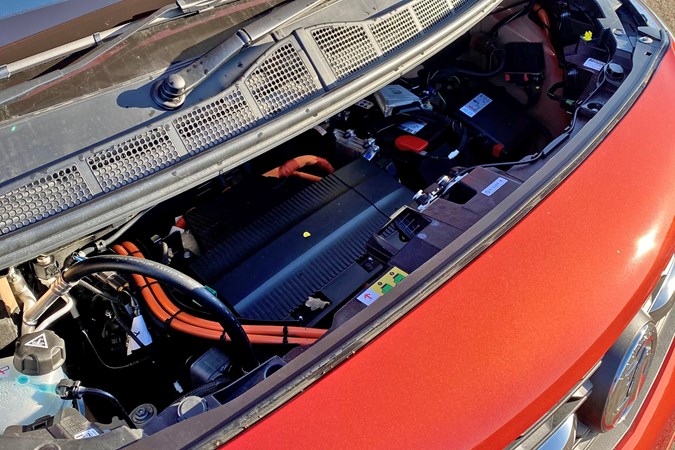
Acceleration up to around the 50mph point is swifter and smoother in the electric Vivaro, the diesel’s higher peak torque figure – where it generates its maximum pulling power – only giving it an advantage when going even quicker than that.
One-up for the Vivaro-e, then.
Comfier, better handling, too
Inevitably, there are times when I find myself driving the Vivaro Life without passengers or cargo behind me, and it’s at those times it feels far from polished, particularly on the indifferently surfaced roads of rural Lincolnshire and Cambridgeshire, further hallmarked by tight corners and undulations of fenland thoroughfares.
Without weight in the back, the diesel model can feel unsettled when cornering at speed, diluting the potential to enjoy the experience at best, and being downright uncomfy at worst.
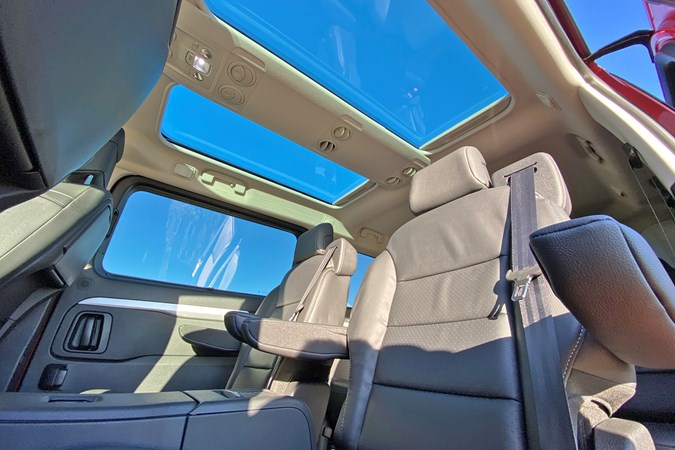
This is significantly less apparent with the Vivaro-e: its heavy batteries live under the floor – incidentally, causing no change to the interior dimensions of the cabin – meaning there’s always more weight pushing the car down towards to the road even with just the driver on board.
Not only is it more settled over changeable surfaces, the damping out of rougher jolts is superior, making it feel more planted and secure. Bodyroll through corners is also reduced thanks to that extra weight being mounted so low.
Make that two-nil for the electric Vivaro.
Vivaro-e is cheaper to run
Ordinarily, electric cars are significantly pricier to buy than their conventionally engined counterparts, a difference which is outweighed during ownership because they’re less costly to run.
Not so with these big Vauxhalls: once the government’s plug-in car grant of £3,000 has been deducted, the Vivaro-e is £50 less than the diesel version.
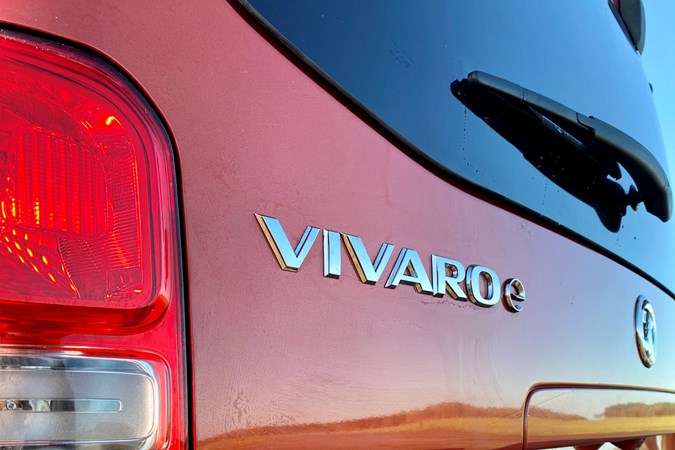
So how much cheaper is it to run? Inevitably that depends on where you charge it. From nearly empty to full, recharging the Vivaro-e Life at home will typically cost £3-5 depending on your tariff, rising to around £8-10. That will give you a driving range (in winter) of around 110 miles (more on this in a bit).
On average, a full tank of diesel (assuming there’s a bit already in it) has been costing around £80, typically delivering 450 miles of range. Broadly speaking, covering that same 110-mile distance in the diesel will set you back around £19-£20.
It’s a hat trick for the electric Vivaro.
So, the Vivaro-e is the one to go for?
As frustrating as it is to say it, no – and the battery size is the reason.
While the Vivaro-e van has the availability of a 75kWh pack giving a range of around 200 real-world miles, the Life version is only fitted with the smaller 50kWh one, with a maximum range in ideal conditions of 144 miles.
To lend it some perspective, that 50kWh battery is the same one fitted to the Vauxhall Corsa-e, where that car’s lighter weight and better aerodynamics ensure 200 miles between recharges isn’t in the realms of fantasy.
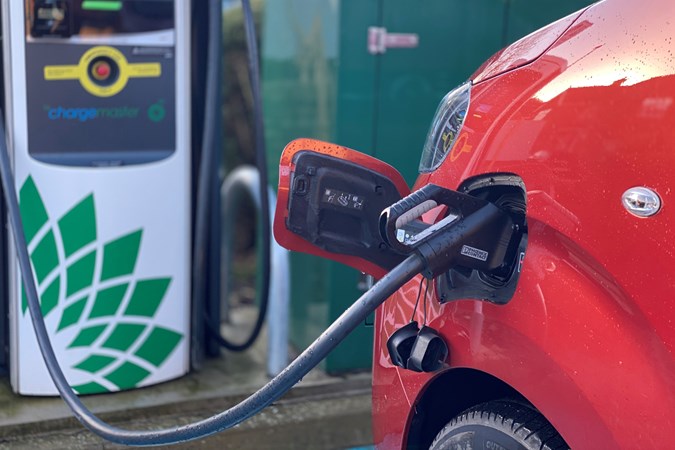
That 110-mile figure was the best I was able to achieve in sub-zero temperatures, when batteries don’t work as efficiently. While such a number might be fine for an urban minicab service, it would make me nervous tackling my 80-mile commute without trundling along well below the national speed limit.
Big family cars are also used for big family journeys – the prospect of having to stop to recharge at least twice en route to visit my aunt in Scotland, for instance (post-lockdown, naturally), would be a non-starter.
That’s assuming a quicker charger of 50kW or more was immediately available when you did need to plug in. Even if one is, you’d be looking at around 75 minutes of plug-in time for fully replenished batteries. I’m cool with that if at the end of it you’ve a healthy range of over 200 miles, but not so much for less than half that.
For now, despite the positives of the electric Vivaro Life, the limited battery capacity means I couldn’t make the switch.
That’s a quickfire trio of goals for the diesel, before progressing to the next round after a penalty shoot-out.
Mileage: 5,844
Fuel economy: 31.4mpg
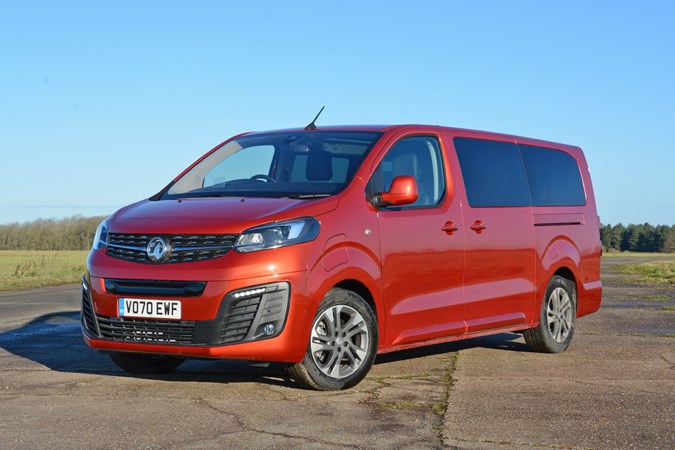
Update 5: space – the ultimate lifestyle vehicle?
Richard’s a fan of cream leather interiors – so pops some new seats in the Vivaro
You know that thing where you get a van, and then everyone wants to borrow it?
Yeah. Keith’s been a victim of it since I went to collect a new office desk (120 x 160cm) in my Mercedes CLA Shooting Brake (boot dimensions 130-140cm x 170cm roughly with the seats down) and discovered it wouldn’t fit (tailgate opening apparently smaller than the box they use at the Post Office to decide your ‘large letter’ is really a ‘small parcel’ – actually about 80cm, but even diagonally ‘not enough to get the table top in’).
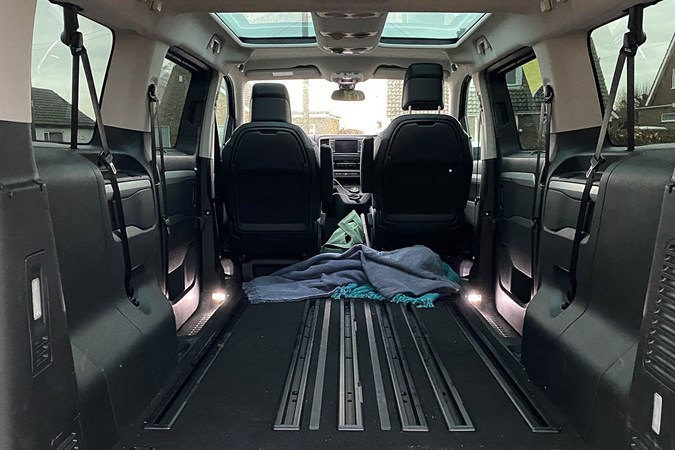
Having obtained the desk, driving the Vivaro seemed like the perfect opportunity to evict a very tired, uncomfortable Freecycle sofa from my last move – and having been tempted by DFS, the news that delivery plus disposal was going to run to almost a couple of hundred pounds before the eternal finance agreement merely served to spur me into action, scouring the classifieds knowing I had the van to make collection easy.
Ever wondered what the Vauxhall Vivaro Life would look like with cream leather seats? Here you go!

As a break from the CLA Shooting Brake, the Vivaro’s got more than just space going for it.
For a start the cold-start idle is more refined and subdued, and refinement below 40mph overall is very impressive for a commercial vehicle, even if this is a lifestyle/people-carrier trim. Having owned several Chrysler Voyagers and other MPVs, I can assure you that while some features of the Vivaro Life are less convenient (the seats are very heavy and lack sensible hand-holds) the driving experience is as good as, if not better than, the traditional seven- or eight-seater MPVs that have essentially disappeared in favour of SUVs.
It’s quick – and quick enough to pass HGVs just after roundabouts on our flat, straight roads without any fuss at all – and the handling is very predictable with the exception of the occasional ‘thud’ from the rear suspension that sounds a little like something’s knocking. Perhaps a spare wheel, or just insufficient weight without loads of people, as the electric versions don’t share this trait thanks to their heft.
Although the driving position is slightly off-centre, I’ve found it acceptable – helped by the easily-adjusted seats and head-up display – and the glazed roof lifts the interior ambience even in the front, so it doesn’t feel like driving a van about; you get the benefits of high driving position and great visibility, though.
Keith’s assured me the Caravelle feels even better as a people-carrier, but for the price difference you could have a Vivaro Life for practical purposes and enough left over to buy and run something luxurious, sporty or electric for the times when you don’t need to drive a huge box around.

However, if the Vivaro Life is all the car you have, it’s quite remarkable how easily it fits into normal routines without feeling like you’ve just rented a van for a house move.
Respectable performance and economy, nice tech (including the massage seats, easily overlooked) and it’s not bad looking, easy to park – I’m missing it already. The prospect of lockdown lifting and a comfortable seven-seater bus to grab friends and go for fish & chips by the seaside is probably the most appealing thing any car has offered in the past year.
Mileage: 7,154
Fuel economy: 31.4mpg
